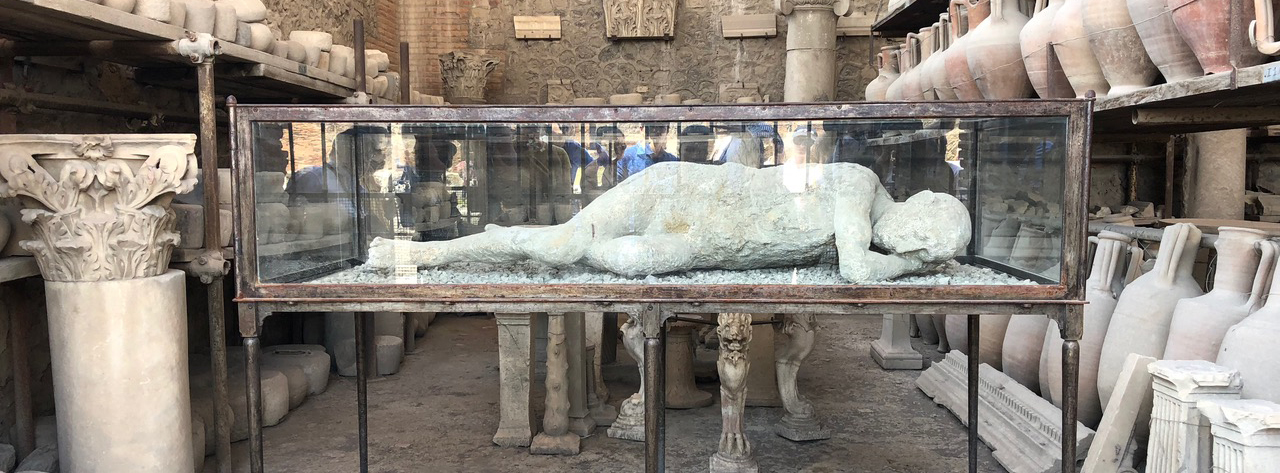ONE-MA3 2018: Pompeii for the Day

By Samantha D’Alonzo ’21
After gathering in the castle’s coveted ‘Wifi Room’ and watching a documentary on the explosion of Vesuvius last night, the One-MA^3 squad ventured out on a four-hour trek from Sermoneta to Pompeii, with a brief pit stop to change trains in Naples.
Pompeii was an ancient Roman city of 20,000 people. The city, along with neighboring Herculaneum, was buried under almost 20 feet of volcanic ash during the horrific 18-hour explosion of Vesuvius in the year 79 AD. As we learned in the documentary, most of the information about the explosion was revealed through a first-hand account from Pliny the Younger, a magistrate, lawyer, and author in Ancient Rome. The city was rediscovered in 1599 by a Spanish engineer. The excavation and restoration of this city, which was framed in time due to the preservative qualities of the volcanic ash, is still occurring today.

The view from what was once Pompeii’s Central Square
We spent the day walking around the city and appreciating its eerie beauty. We saw everything from body casts of the victims of Vesuvius, to merchant stands, to frescoes and restored mosaics.

An example of a cast at Pompeii. These casts are made by delicately pouring plaster in the voids of ash left by the bodies of the residents of Pompeii in their final moments
The group was in awe when Professor Masic explained that Giuseppe, the artist who taught us about mosaics a few days ago, was responsible for restoring some of the largest and most central mosaics at Pompeii. After trying our hand at making the tesserae, we had a significantly greater appreciation for the intricate and detailed mosaics we saw.

The mosaic Giuseppe restored

Some members of the group appreciating Pompeii, and playing ‘The floor is lava‘
This summer, Professor Admir Masic is leading a program on Materials in Art, Archaeology and Architecture (ONE-MA3), in which MIT undergraduates are conducting three weeks of fieldwork in Privernum, Pompeii and Turin as a prerequisite for the Fall 2018 MIT course, 1.057 Heritage Science and Technology. The program involves real-world analysis of ancient infrastructures and materials and focus on teaching ways to improve sustainability of the future through the study of ancient successes.



